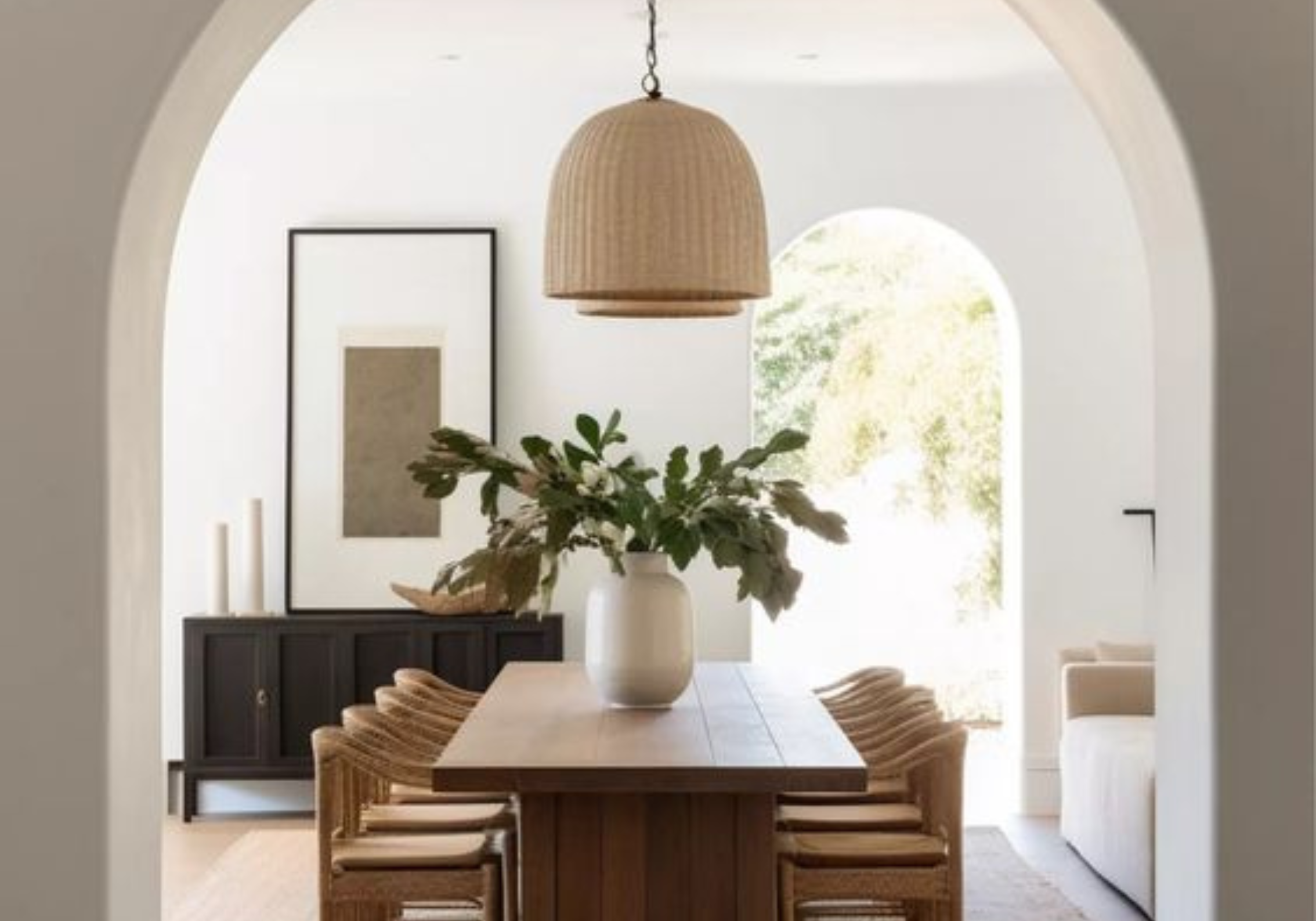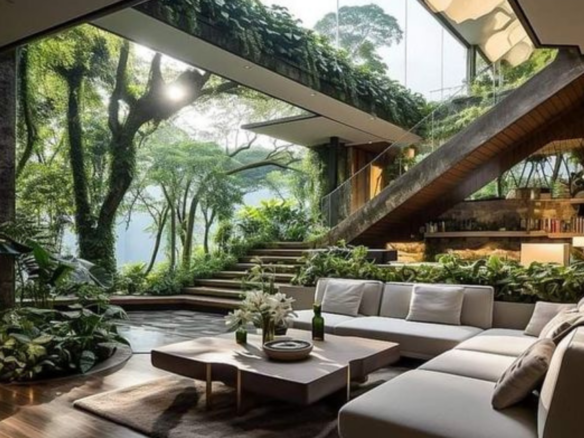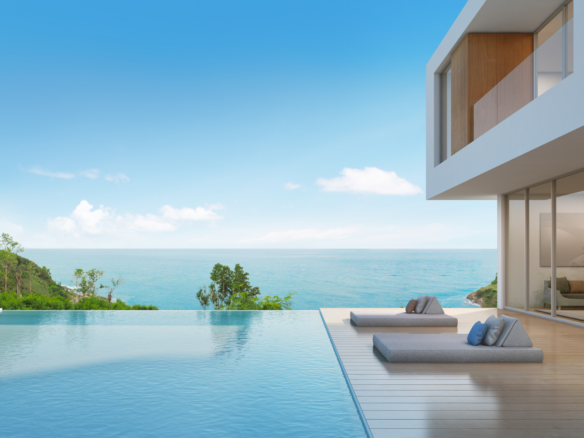As autumn arrives and the weather changes, so do the priorities in our homes. The coolness of the season invites us to enjoy warmer and cozier spaces, but how can we achieve that comfort without compromising the environment? In the luxury housing sector, sustainability has not only become a trend but a necessity. Here we explore how a high-end home can be eco-friendly, efficient, and responsible by using sustainable materials, taking advantage of bioclimatic design, and adopting renewable technologies.
1. Eco-Friendly Building Materials: Luxury and Energy Efficiency
When we think about the comfort of a home in autumn and winter, the ability to retain heat without relying solely on heating systems is key. Building materials play a fundamental role in this aspect. The luxury market is increasingly adopting eco-friendly options that not only ensure comfort but also minimize environmental impact.
Materials such as recycled wood, cork, and high-efficiency glass are being used more frequently in luxury homes for their ability to thermally insulate spaces. Recycled wood, for example, not only adds an elegant and natural aesthetic but also acts as an excellent thermal insulator. Cork, besides being a renewable resource, is highly effective at retaining heat in the home during colder months. High-efficiency glass, on the other hand, allows homeowners to enjoy large windows that maximize natural light without sacrificing indoor temperature.
2. Bioclimatic Design: Naturally Harnessing the Climate
Bioclimatic design is an innovative solution that is increasingly integrated into sustainable luxury homes. This approach leverages the natural resources of the environment—such as sunlight, ventilation, and building orientation—to improve thermal comfort and reduce dependence on mechanical systems.
In autumn, when the days are still sunny but temperatures begin to drop, a luxury home designed with bioclimatic principles can retain the heat accumulated during the day, thanks to large windows facing south and materials with high thermal inertia that store the heat. Moreover, proper passive ventilation and protection against cold northern winds help regulate temperature naturally, keeping the home warm without excessive energy consumption.
3. Renewable Energies: Sustainable Solutions for Winter
One of the strongest trends in sustainable luxury architecture is the integration of renewable energy sources, such as solar or geothermal, to meet the home’s energy needs during autumn and winter. In this type of homes, solar panels are becoming increasingly popular for capturing the sun’s energy, even during colder months when daylight hours are shorter but still sufficient to power heating or hot water systems.
Additionally, geothermal systems, which use the constant temperature of the ground to generate heat, are a highly efficient and environmentally friendly option. In luxury homes, these systems not only provide a clean and renewable energy source but also add value to the property, allowing homeowners to enjoy a comfortable living space without increasing their carbon footprint.
4. Green Certifications: A Mark of Quality in Luxury Homes
When it comes to sustainable luxury homes, green certifications like LEED (Leadership in Energy and Environmental Design) or BREEAM (Building Research Establishment Environmental Assessment Method) have become key indicators of quality and environmental responsibility. These certifications guarantee that the home has been built and managed under strict sustainability standards, evaluating aspects such as the use of eco-friendly materials, energy efficiency, waste management, and the use of renewable energy.
For luxury homeowners, having an eco-certified home not only means living in a more environmentally friendly space but also ensures long-term property value. Investing in a home with these certifications guarantees that the design, construction, and operation of the home meet the highest sustainability standards, contributing to a more responsible and timely lifestyle.
Conclusion: The Future of Luxury is Sustainable
Luxury and sustainability are no longer opposing concepts. Today, it is possible to enjoy a high-end home that is both comfortable and eco-friendly, especially as autumn arrives and energy needs shift. The use of sustainable materials, bioclimatic design, the integration of renewable energy, and green certifications are the keys to creating luxury homes that not only provide well-being to their owners but also contribute to a more responsible and planet-friendly future.
At Dust and Sand Luxury Homes, we believe sustainability is the true luxury of the 21st century.
Dust and Sand Article


